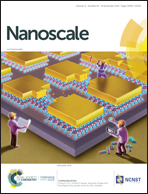Recent advances in multiphoton microscopy combined with nanomaterials in the field of disease evolution and clinical applications to liver cancer
Abstract
Multiphoton microscopy (MPM) is expected to become a powerful clinical tool, with its unique advantages of being label-free, high resolution, deep imaging depth, low light photobleaching and low phototoxicity. Nanomaterials, with excellent physical and chemical properties, are biocompatible and easy to prepare and functionalize. The addition of nanomaterials exactly compensates for some defects of MPM, such as the weak endogenous signal strength, limited imaging materials, insufficient imaging depth and lack of therapeutic effects. Therefore, combining MPM with nanomaterials is a promising biomedical imaging method. Here, we mainly review the principle of MPM and its application in liver cancer, especially in disease evolution and clinical applications, including monitoring tumor progression, diagnosing tumor occurrence, detecting tumor metastasis, and evaluating cancer therapy response. Then, we introduce the latest advances in the combination of MPM with nanomaterials, including the MPM imaging of gold nanoparticles (AuNPs) and carbon dots (CDs). Finally, we also propose the main challenges and future research directions of MPM technology in HCC.

- This article is part of the themed collection: Recent Review Articles


 Please wait while we load your content...
Please wait while we load your content...